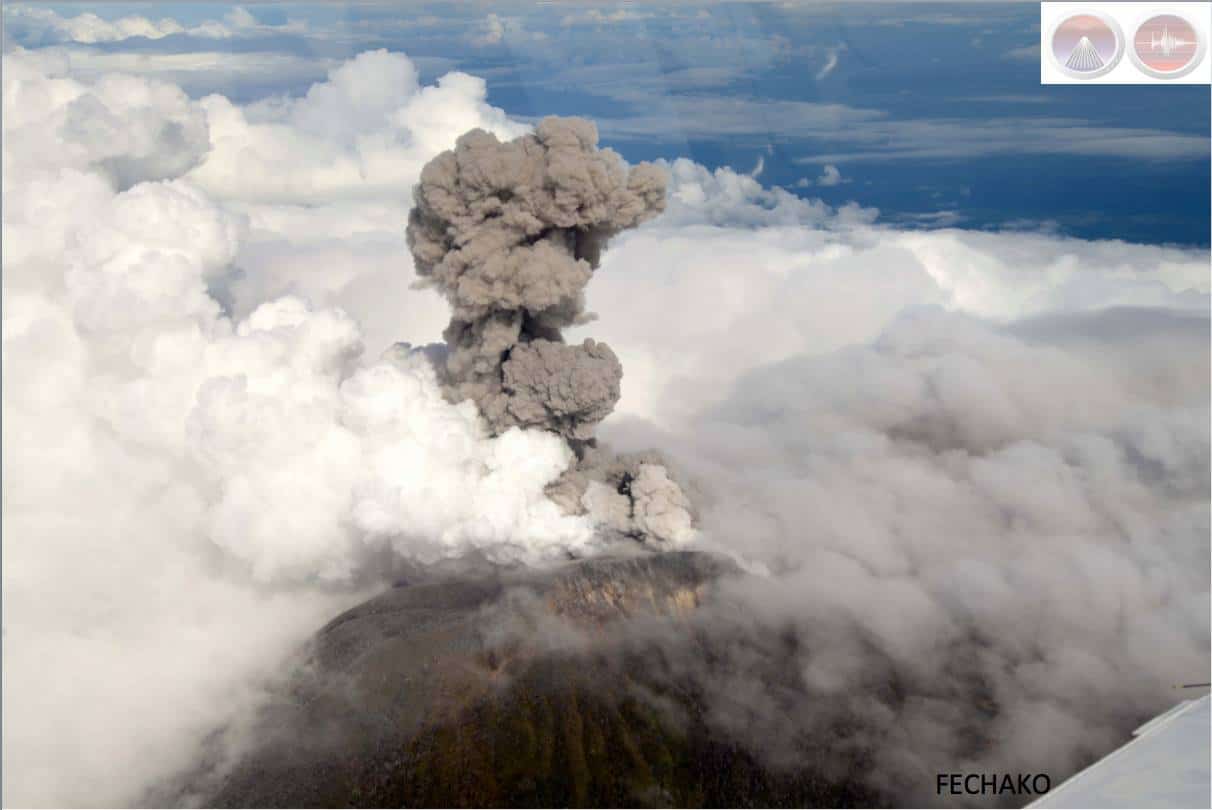Update 4:40 p.m.:
The National Emergency Commission (CNE) recommended Thursday afternoon that the Education Ministry suspend classes in five cantons in Cartago province, including Turrialba, Jiménez, Alvarado, Oreamuno and Cartago. CNE also recommended that the National System of Conservation Areas close the Irazú Volcano National Park following the eruptions at the Turrialba Volcano on Wednesday evening. Authorities had already closed the Turrialba Volcano National Park and announced they would closely monitor Poás Volcano.
Update 11:20 a.m.:
The Civil Aviation Administration issued a warning for all airplanes to avoid a 32-kilometer (20-mile) radius around Turrialba Volcano and up to an altitude of 5.8 km (19,000 feet). Costa Rica’s largest airport, Juan Santamaría International Airport, outside of San José, is not within the bonds of the preventive measures. No flights have been grounded or interrupted so far. Civil Aviation Director Álvaro Vargas said that additional measures could be adopted as the situation develops. Volcanic ash can affect the operations of an airplane’s motor and turbines.
RTN News tweeted images of the crater Thursday morning:
Imágenes cráter volcán Turrialba y alrededores. Información en vivo a las 11:30 am desde la zona con @aortizmurillo pic.twitter.com/3kVqXBKFJq
— Costa Rica Noticias (@SinartNoticias) October 30, 2014
Original post continues here:
Loud rumblings and ash covering roofs, gardens, roads and cars are the first results of increased activity at Turrialba Volcano, located northeast of the province Cartago, that started late Wednesday evening. According to the National Seismological Network (RSN), the eruption is the volcano’s largest in 150 years.
Experts from the University of Costa Rica (UCR) and National University (UNA) reported increased seismic activity on Wednesday afternoon, and at 11:10 p.m. they recorded a phreatic explosion at the volcano. The fumarole from the explosion reached several hundred meters, Carlos Ramírez, a vulcanologist at the crater, told The Tico Times. Ramírez said that the eruption involved ash, rocks and possibly magma.
Following the eruption, experts began receiving reports of strong rumblings and ash falling in the canton of Turrialba and also at communities northwest of the capital San José including Moravia, Coronado and Tibás. Early Thursday morning, residents of the provinces of Heredia and Alajuela also reported thin layers of ash on their properties.
National Emergency Commission (CNE) officials along with UNA and UCR vulcanologists went to the area and are conducting on-the-ground evaluations of the volcano’s activity.
The spewing of gas, vapor and ash is concentrated in two of the volcano’s craters, and activity remained constant on Thursday morning, according to reports from the RSN and the Volcanological and Seismological Observatory of Costa Rica (OVSICORI).
CNE officials declared a Yellow Alert in the volcano area, and the Turrialba Volcano National Park is closed to visitors until further notice. CNE evacuated 11 people from the surrounding areas of La Pastora, La Central and La Picada, said Rebecca Madrigal, a press representative with CNE. The area near the volcano has been largely deserted since recent activity at the volcano started in 2010.
Emergency agencies do not have any reports of injuries at this time.
Turrialba Volcano in July last year also showed high activity, mostly with vapor spewing and tremors that on that month reached an average of 20 per day. On July 20, 2013, vulcanologists recorded up to 30 per hour, however no significant damage was reported.






